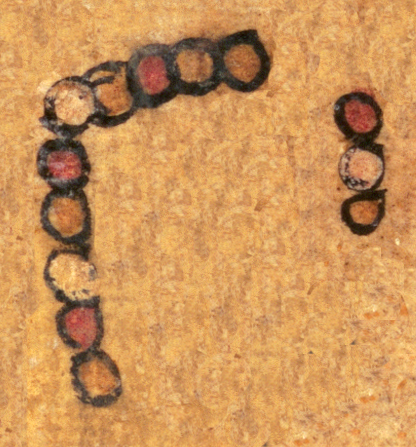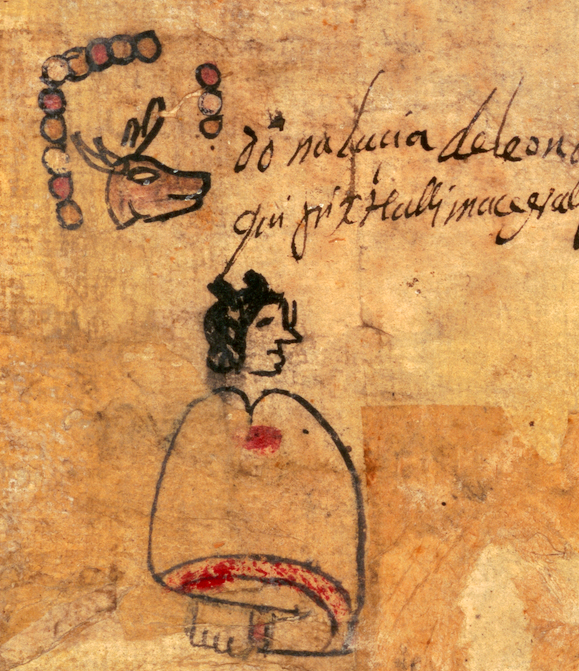matlactli omei (CQ)
This notation for the number thirteen (matlactli omei) involves groupings of circles that serve as counters (ones), and they are painted in alternating colors of yellow, red, and white. The groupings are one vertical group of five (on the left), one horizontal group of five (across the top), and one vertical group of three (on the right). The groups are arranged at right angles.
Stephanie Wood
The groupings (5 + 5 + 3) add up to 13, which is why we named this notation matlactli omei. The groupings tell us something about the historical formation of numbers and their association with fingers and toes, given that each hand would be five. The way the two groups of five run together could obscure the reading of 5 + 5, as the left-hand vertical string almost looks like six. The three is set apart, so that, in the end, one could say the equation is 10 + 3. The words for this number translate this way, too, breaking down as matlactli (ten) om- (plus) -ei (three)
The color pattern of the ones or counters is worth further study. Yellow, red, and white are the three most common colors for notations of counters, but the reading order remains ambiguous. These colors, incidentally, coincide with colors of maize and of cardinal directions.
Stephanie Wood
covers ruling men and women of Tecamachalco through 1593
Randall Rodríguez
thirteen, trece, numbers, números, ten, diez, three, tres

matlactl omei, thirteen, https://nahuatl.wired-humanities.org/content/matlactli-omei
trece
Randall Rodríguez
The Codex Quetzalecatzin, aka Mapa de Ecatepec-Huitziltepec, Codex Ehecatepec-Huitziltepec, or Charles Ratton Codex. Library of Congress. https://www.loc.gov/item/2017590521/
The Library of Congress, current custodian of this pictorial Mexican manuscript, hosts a digital version online. It is not copyright protected.


